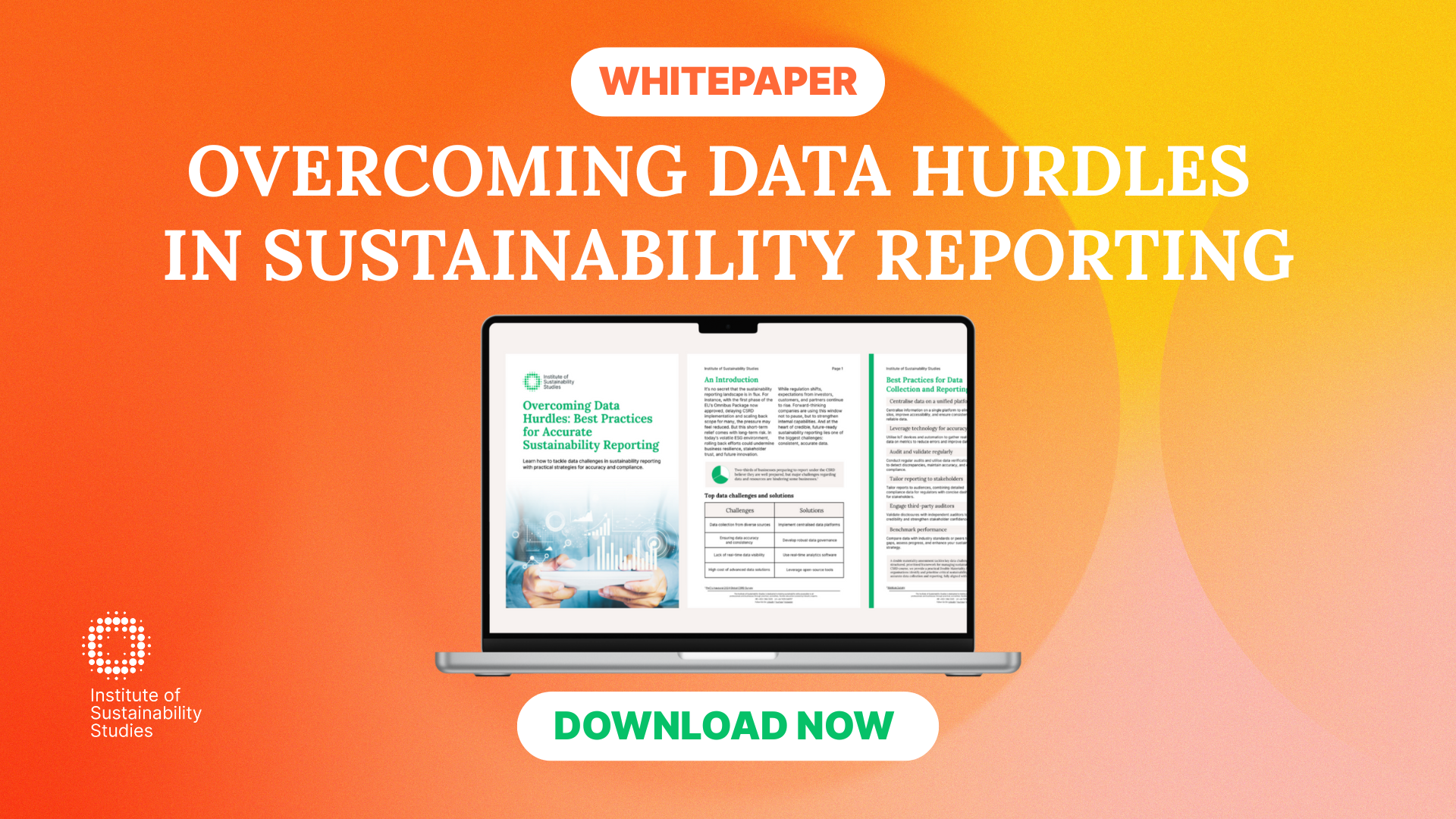Small and medium-sized enterprises (SMEs) and companies across industries are under immense pressure to gain visibility into their supply chains. This pressure is calling on them to share more data and information with their stakeholders, partners, and customers. To put that into perspective, Food Institute reports that 72 percent of e-commerce shoppers deem transparency important when making purchasing decisions.
The most effective way a green business can be open and honest is by pursuing transparency and traceability. They must be transparent in their marketing efforts, both digital marketing and offline but also have traceable supply chains. While most business leaders understand these phrases, they may not be able to picture what they look like within their organisation. Below we dive into why supply chain transparency and traceability are important for a business sustainability strategy.
Understanding supply chain transparency
Most business leaders understand the term transparency but what exactly does this look like in practice? Essentially, transparency refers to capturing and sharing ‘high-level’ information throughout the supply chain. This captured data is accurate and specific and relates to the names of suppliers, a product’s components, associated certificates, where facilities are located, and more.
Transparency not only enables businesses to be more open and honest with their customers but allows them to map their entire supply chain. This helps them to gain greater visibility of all the economic operators throughout this supply chain. This system of capturing data gathers specific information that relates to every supplier like certifying bodies, facility certification, and expiration dates.
The increased visibility that comes with this level of transparency also means that retailers or brands can ensure all operators are compliant with sustainability, safety, and social responsibility requirements. Boosting transparency is just one effective way to show a brand’s sustainability efforts and openness to stakeholders. Most businesses have utilised it as a means to respond to criticism, where achieving full traceability is incredibly difficult.
One great example of a brand that pushes for supply chain transparency is Nike. They were one of the first companies to publish their supplier list. Right now, the Nike manufacturing map offers more insight into its supplier base. Businesses choose to publish periodic reports, which share genuine progress, including when performance takes a dip. The transparency of poor performance in itself serves to drive action.
What is traceability?
The data gathered during traceability is a lot more granular than that captured with transparency. It usually relates to individual components or ingredients. For example, it could be batch-lot data, operational information, or purchase order (PO) data.
Transparency, on the other hand, focuses on mapping the entire supply chain. Traceability, therefore, looks at individual batches of purchase or component orders as they go through the supply chain. More focused recalls are possible because of the traceability system’s use of precise information, which lowers their cost and scope.
From the very start of the supply chain to the point of use, it is the process of tracking the location and provenance of products and their inputs. There are lots of different reasons to monitor it and some industries have been pursuing it for many years. The pharmaceuticals and food sectors are good examples, whereby safety is of the highest importance.
Traceability offers opportunities to discover supply chain efficiencies and achieve regulatory requirements to comprehend and connect with the actors within the upstream supply chain. Additionally, to tell consumers about the journey and provenance of products too, often utilising scannable QR codes or pictures on the packaging.
The UN Global Compact and BSR’s definition of traceability embed sustainability. Although traceability is the backbone of an environmentally-friendly product system to verify environmental and social statements, traceability does not simply provide this verification. Some of these claims could include things such as no forced labour or carbon neutrality.
About supply chain mapping and how it can help
Mapping is one of many supply chain solutions. It is essentially a process of painting a full picture of the organisations and companies within the supply chain at every tier. Mapping does not just show the flow of products but allows for the visibility of all the potential actors within every tier of the chain.
Mapping acts as a helpful tool for prioritising suppliers and actions and supports risk assessment within a sustainable sourcing plan. It also offers the chance to create some interactive visuals which still respect confidential trading relationships within the supply chain.
With mapping, you generally engage with direct suppliers to uncover indirect suppliers. This can be very useful if you are unfamiliar with who your sub-suppliers are in addition to their sustainability and business practices. The best part of supply chain mapping is it can be achieved with very little additional time or effort.
You will already have a better understanding of your sub-suppliers and the chain if you have a robust traceability system. Here, openness is crucial because it enables businesses to map their entire supply chains and identify hazards.
What is supply chain visibility, and how does it relate to transparency and traceability?
Supply chain visibility refers to being aware of each touchpoint within your supply chain at any time. It enables businesses to collect and share more information with customers and stakeholders, with several defined goals. In addition to reducing sustainability and business risks, supply chain visibility offers an opportunity to enhance overall performance.
There is also an opportunity here to identify any potential issues further throughout the supply chain. Transparency, mapping, and traceability are all key parts of supply chain visibility. Each of these factors contributes to building a resilient supply chain. One which can encourage sustainability and withstand uncertainty. This level of visibility is very important for businesses, that are experiencing pressure to act on environmental and social issues from the public and respective local governments.
Challenges associated with supply chain visibility
Like most things, there are several common challenges we see with supply chain visibility. The main challenges associated surround capturing the data and information. This is because having a system in place requires sharing data and information between the various tiers of your supply chain. This is why businesses need to establish a good system. However, this is a challenge that can be easily resolved.
Additionally, businesses can lose control over the inbound supply network due to the lack of visibility. Trying to keep all aspects of your supply chain in mind can be a challenge in itself. Therefore, elevated inventory levels are seen at numerous points along the supply chain as a result of the lack of demand insight into the future. A greater system and more planning and anticipation can too help businesses to overcome this challenge.
Similarly, business leaders also need to know which data needs to be focused on and which should be ignored. In essence, being aware of the different tiers within your supply chain, and disseminating the relevant information can go a long way. Having a system that provides relevant data on a real-time level will help. This will help to predict any hurdles in the future, create unity throughout the supply chain, boost collaboration, and react more effectively.
Why all these elements are important for a business
Transparency and traceability are very important for businesses because they help them achieve their ultimate aim, which is supply chain visibility. Improved supply chain visibility leads to enhanced workflow and increased profits. Not just that, but it allows organisations to reduce costs for customers and reduce and anticipate risks.
Supply chain visibility pinpoints potential disruptions that could surface in advance, which means the chances of encountering problems are greatly reduced. Through this, businesses can limit roadblocks and get exceptional results. Visibility also gives business leaders the ability to be agile, to get out in front of everything that comes with managing a supply chain, and to make the necessary changes to enhance productivity despite the circumstances.
Brands can also move quickly when they know what is potentially coming. Supply chains have to be able to shift and change to meet the evolving customer needs. With that in mind, full visibility into supply chain processes allows you to identify what you need to do to match your supply chain with customer demands. With greater visibility, you also get to access large amounts of supply chain data which you can use to make your operations even more efficient.
Building a more visible supply chain
Building a more visible supply chain can be done in a range of ways. Ultimately, though, employees should be versatile from the top of the chain to the very bottom. Employing good technology certainly helps as it delivers improved visibility of moving parts that go into operating a supply chain. Additionally, investing in improving the abilities of all tiers.
After all, the employees are your eyes and ears and training them to be versatile in their roles will help them too. To make informed decisions at great speed without risking visibility, a strong workflow is needed and this begins with the team so be sure to take a look at your workflow. Your employees need to wear lots of different hats to maximise visibility, and focusing on workflow will help you uncover critical decisions to be made.
Summary
The terms traceability and transparency are often used interchangeably and are key concepts behind the development of effective supply chain management strategies. Ultimately, both terms help to establish supply chain visibility which is vital for all businesses looking to boost performance and take action on social and environmental issues.
Dedicated to harnessing the power of storytelling to raise awareness, demystify, and drive behavioural change, Bronagh works as the Communications & Content Manager at the Institute of Sustainability Studies. Alongside her work with ISS, Bronagh contributes articles to several news media publications on sustainability and mental health.
- Bronagh Loughlinhttps://instituteofsustainabilitystudies.com/insights/author/bronagh/
- Bronagh Loughlinhttps://instituteofsustainabilitystudies.com/insights/author/bronagh/
- Bronagh Loughlinhttps://instituteofsustainabilitystudies.com/insights/author/bronagh/
- Bronagh Loughlinhttps://instituteofsustainabilitystudies.com/insights/author/bronagh/









